Located in a remote area of Central Asia, Kyrgyzstan (kɪəɹ.ɡɪˌstɑːn) is a destination that many seasoned and new travellers, alike, would be thrilled to explore. Kyrgyzstan embodies authenticity and heritage, plus it offers the serenity of remote settings. Still, as a country, it is not widely talked about nor a frequently visited site. But there’s much to fall in love with when visiting this beautiful country, including its landscapes (which is ninety-four percent covered in mountain ranges) and hospitality.
Travelling to this remote part of the world can prove challenging. Further, its location and proximity to the Middle East can lead to questions for tourists asking, "Is it safe to travel to Kyrgyzstan." The short answer is yes. However, there are some obstacles that may pose to be difficult for new visitors to navigate. For instance, a large portion of this country is still nomadic and untouched, therefore, it doesn't boast developed tourist accommodations and infrastructure. It's best to find a tour guide, like Wild Frontiers, to help you make the most of your holiday in Kyrgyzstan.
If you speak to anyone who has been to Kyrgyzstan they will probably tell you that it's one of their favourite places in the world. Exactly why this is can be difficult to narrow down because there are so many reasons why you should be adding this amazing country to your bucket list. That said, I've managed to whittle it down to the five below…
Before we give you the list, let’s celebrate a recent change to this countries travel restrictions. Now, Britons can now enjoy a trip to Kyrgyzstan up to 60 calendar days visa-free! Keep reading to find out the answer to the frequently asked question, "Is it safe to travel to Kyrgyzstan?"
Unexplored Kyrgyzstan Lands - Off the Beaten Track
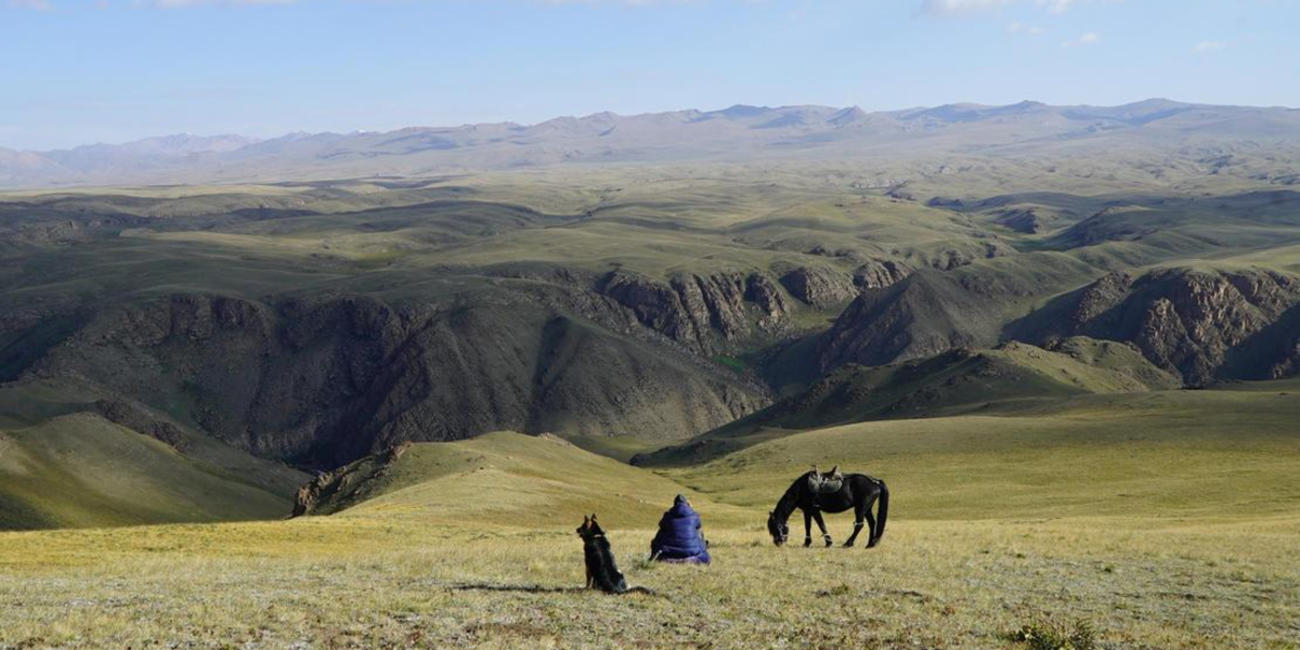
Despite hosting the World Nomad Games in 2018 and a gradually increasing reputation in travel circles, Kyrgyzstan is still relatively unknown to most travellers - perhaps unsurprising considering it has only been an independent nation for 28 years. This means if you go in the next few years, you'll manage to avoid the overtourism that is starting to plague many of the world’s most iconic sites. You can trek for days in the Tian Shan, or 'Mountains of Heaven', without seeing another soul and spend time with some of the last remaining nomadic people of the Central Asian Steppe. It's the perfect place for a little technological detox.
Similarly, Kyrgyzstan is one of the least densely populated countries in the world. In fact, there are around 29 residents per square kilometer of land. For travellers, this means fewer crowds, more adventure!
Kyrgyzstan’s landscape makes it a beautiful country to visit. Here are some quick facts to note:
- Landmass consists of 94% mountain ranges
- The highest peak reaches 7,439 meters
- China borders on the East, Uzbekistan on the West, and Tajikistan to the South
This landlocked country is every mountain explorer’s dream.
Breathtaking Scenery
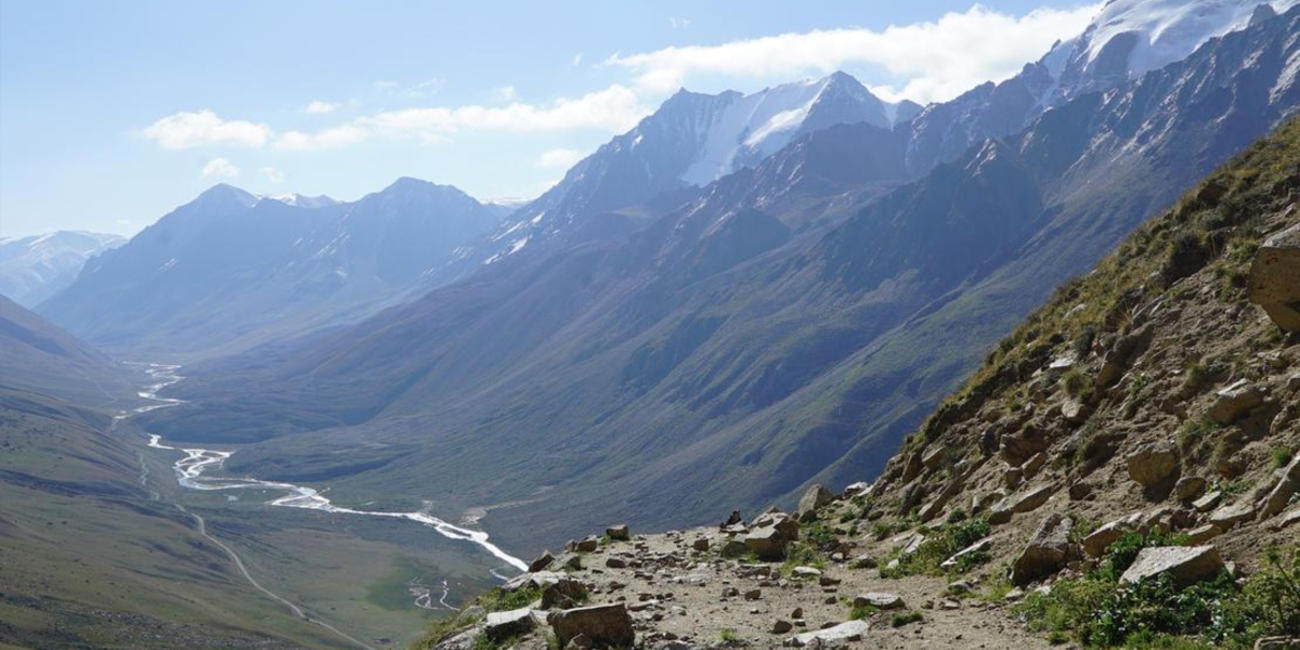
It would take a writer far better than me to describe the natural beauty of Kyrgyzstan in words alone. The soaring ‘Mountains of Heaven’ live up to their billing, while the ruggedness of Son Kul - one of the world's highest lakes - is quite something to behold. Not to mention the largest walnut forest in the world at Arslanbob, or the picturesque beauty of Issyk Kul, once a popular beach resort for well-to-do Soviets. As we travelled from place to place the desire to take photos of the ever-changing, but always impressive scenery was replaced by an attempt to just sit back and take it all in while we could.
The beauty of this country extends through the mountain ranges and small towns. It’s located along the ancient Silk Road of Central Asia and has an incredible variety of its landscape. In addition to its impressive mountain ranges, it also boasts valleys and basins, positioned below expansive skies, which still remain untouched by pollution. Some of the regions are inhabited by nomadic shepherds. There is also an abundance of turquoise lakes with soaring wild eagles overhead and beautiful roaming horses. The land is also rich in uniquely rare flora and fauna, which remains unobstructed.
Things of note:
- Wide-ranging climate from 43°C in Summer to -30°C in Winter
- 63% of the six million residents live in the countryside
- Common lodging and housing for nomads is a yurt
Action & Adventure
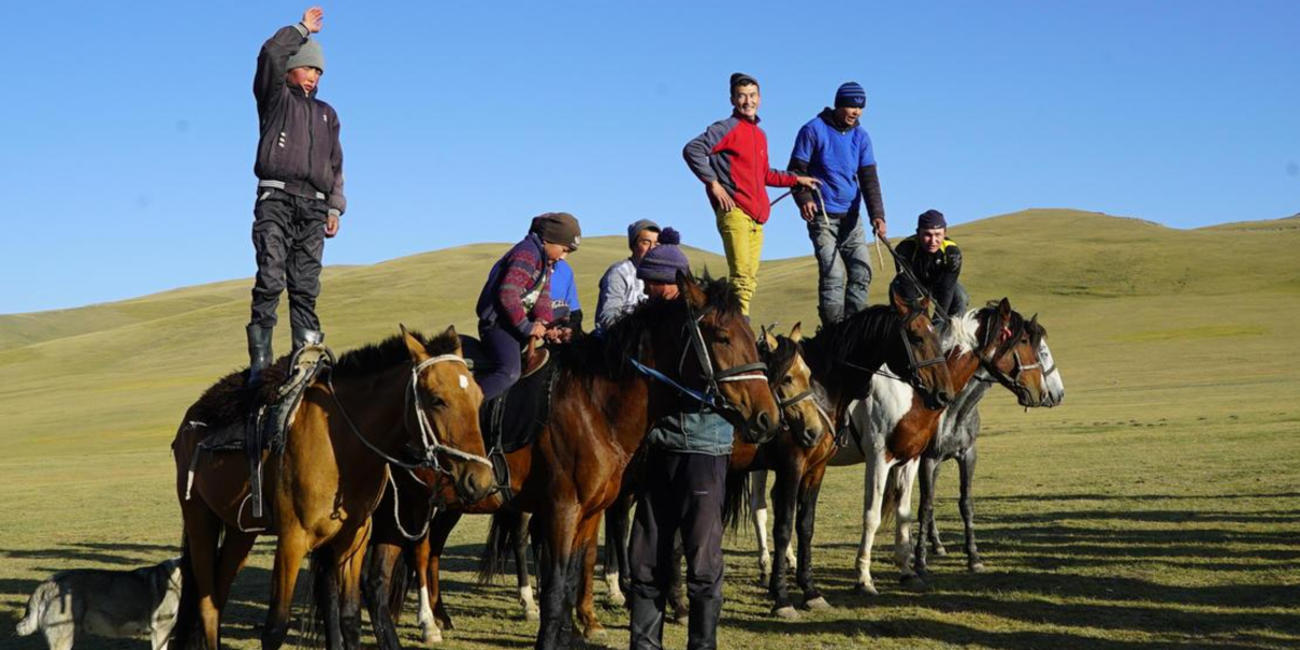
There is so much to do in Kyrgyzstan for the adventurous traveller who likes to get their heart racing. The country’s horses are rightly famed and provide an excellent way to see the country in the same way countless generations of nomadic people have done for millennia. We were also fortunate enough to be spectators at a demonstration of expert local horsemanship which included picking up a bank note from the ground at full gallop, kok-boru (sheep carcass polo) and horseback wrestling. There’s also the opportunity to enjoy stunning views in some of Central Asia's best trekking, particularly in the mountains (which make up 95% of Kyrgyzstan's landscape) where we traversed the epic 4100m Ton Pirival Pass.
One of the most celebrated climbs by expert mountain climbers is Peak Karakol, which has an altitude of 5,200m (17,000ft). There are also a number of other outdoor activities to enjoy in Kyrgyzstan including cycling tours, which offers a great way to explore the country. You can also enjoy exploring the country via Jeep and Motorbike tours.
Old Customs & Tradition
An old tradition still regularly practiced in Kyrgyzstan is jailoo. As summer comes, thousands of shepherds bring their livestock to summer pastures called jailoo. It’s a centuries-old tradition that is still celebrated now. Tourists can bare witness to this passing season and they have the chance to participate, as well. Drinks like koumiss (mare’s milk) are served, along with beshbarmak (a famous national dish).
Cuisine
Like its surrounding landscapes, Kyrgyzstan also has unique cuisine. While there’s some nod of influence to its Chinese and Indian neighbors, the cuisine is mostly dominated by meat and dairy. More specifically, mutton, beef, and horse meat. The beshbarmak staple is made from finely cut boiled sheep meat mixed with homemade noodles and broth. Traditional dairy products comprise of kaimak (cream), sary mai (melted butter), airan (sour yoghurt), byshtak (cottage cheese), and kurut (salted cheese).
- The best season has been named June through October
- Jailoo event/tradition is generally not recommended for travellers in poor health or with young children
- The cuisine mostly consists of meats and dairy
It's Easy to Go
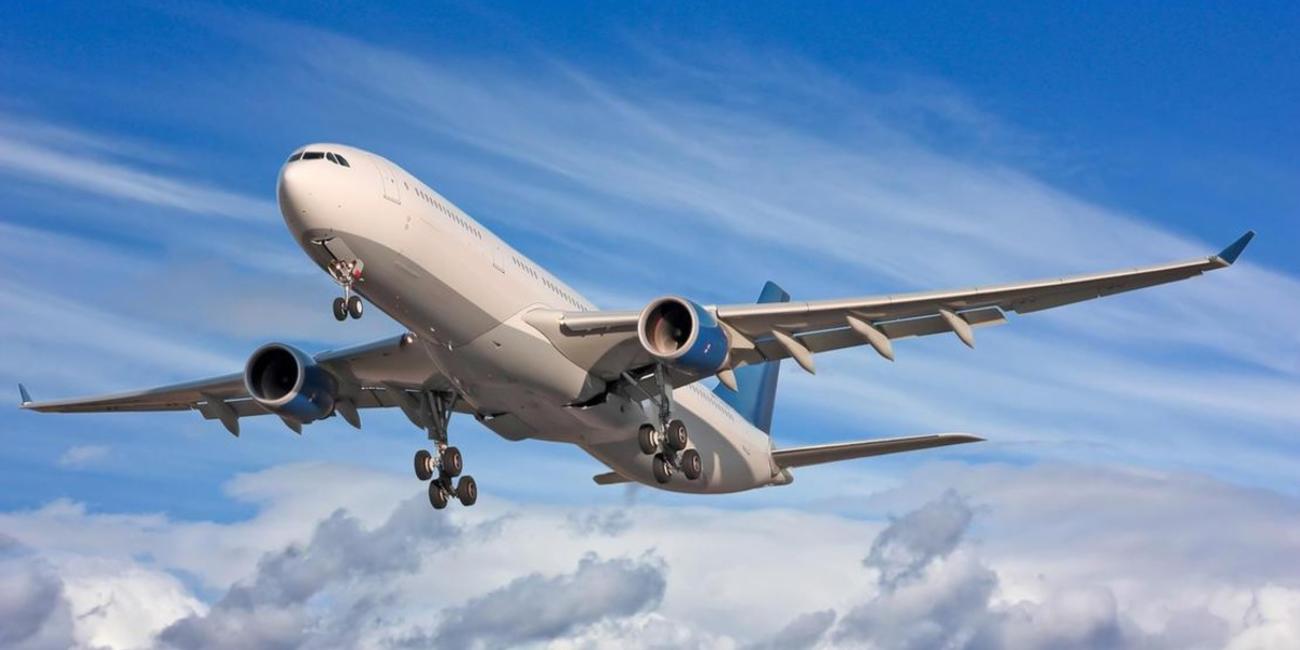
So you're wondering, "Is it safe to travel to Kyrgyzstan?" Because the country borders some of the more prevalent middle eastern areas, it can certainly be an apt question. The short answer is, yes, it's entirely safe to visit this beautiful area of the world. Additionally, despite being a relatively little-known country, Kyrgyzstan is actually a fairly straightforward destination to visit. Flights from Western Europe are around 8hrs and usually come via Istanbul or Moscow. As a bonus, visitors from the UK, USA, Canada, Australia and much of the EU can enter without a visa for up to 60 days.
Nomadic Hospitality
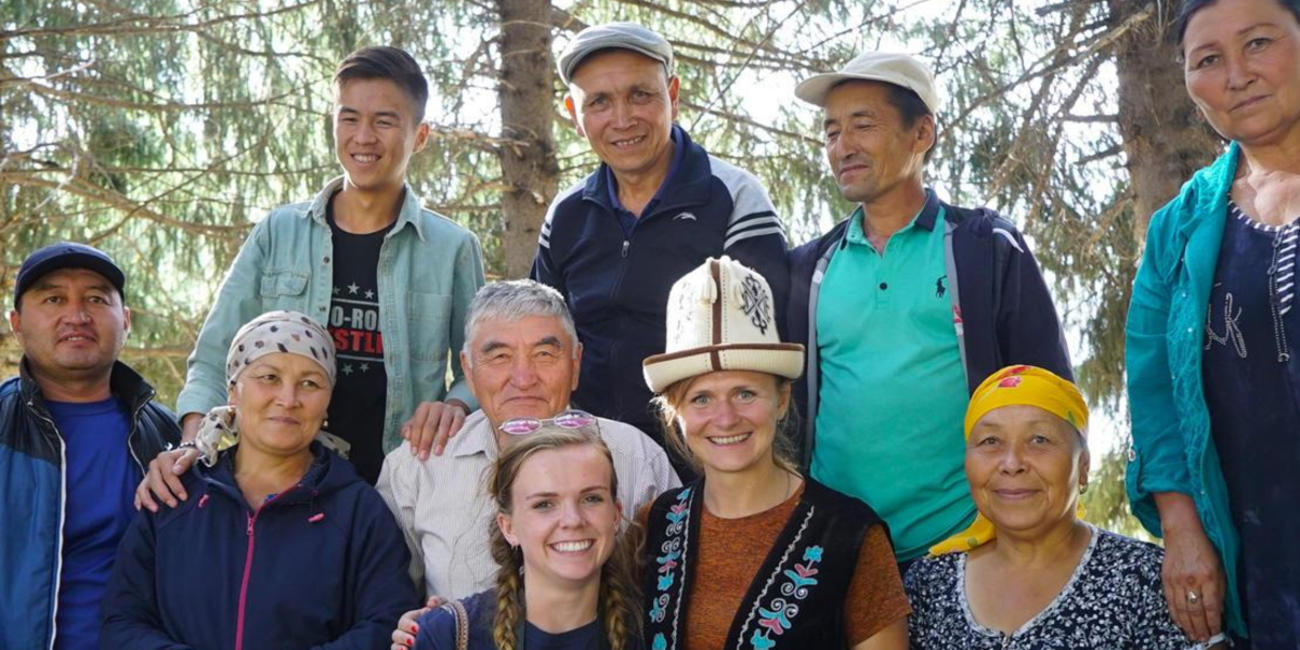
The traditional nomadic culture of the steppe is still an important part of Kyrgyz national culture and although many have left their rural lives behind, the nomadic principle of hospitality remains. I can’t count the number of times members of the groups were invited into homes or to parties often with the promise of vodka, tea or food. Everybody was so friendly and despite the language barrier – my Russian and Kyrgyz needs a lot of work – you could tell that you were genuinely being welcomed.
Guests have always been welcomed and honored among the Kyrgyz people. Travellers are often referred to as kydaly konok (God’s guests). Historically, Kygyz families were obligated to provide shelter and food for those travelling, especially those who were travelling near their home at sunset. It’s important for them to preserve their good name of their clan and avoid “evil gossip” by lack of hospitality. For this reason, outside visitors have plenty of opportunities to stay with residents of Kyrgyzstan to experience their nomadic lifestyles living in yurts.
